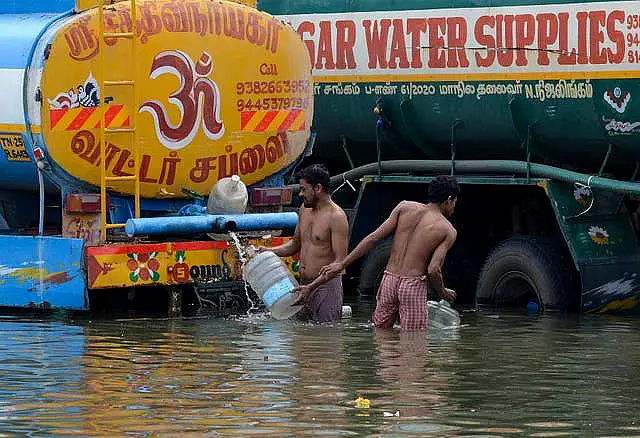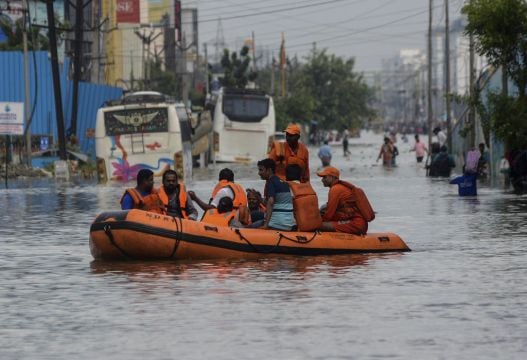Twelve people have died in the downpour before Tropical Storm Michaung made landfall along India’s south-east coast, bringing further torrential rains and strong winds, officials said.
The storm hit Andhra Pradesh state with maximum sustained winds of 56-62mph and gusts up to 68mph, the Indian Meteorological Department said, adding that the storm would weaken over the next few hours.
Authorities are on high alert for heavy showers over the next 24 hours.
Another state in the south, Tamil Nadu, experienced days of heavy rains ahead of the storm.
Downpours triggered accidents that led to at least 12 deaths across vulnerable districts, officials told the Press Trust of India news agency.

In Tamil Nadu’s capital city of Chennai, rain from the storm’s outer reaches caused walls to collapse, uprooted trees and submerged roads and cars in knee-deep waters.
Videos on Monday showed water streaming onto the city’s airport tarmac, forcing authorities to temporarily shut it down and cancel flights.
The downpours have since begun to recede, and the airport has reopened, but many parts of the city remained flooded on Tuesday.
Rains also pounded parts of Odisha state in the east, but there were no immediate reports of deaths or severe damage.
In Andhra Pradesh, where the storm made landfall near Ongole district, officials shut down schools and evacuated more than 9,000 people from coastal and low-lying areas.
Parts of the state saw as much as 390mm (15.4in) of rain on Tuesday morning before the storm closed in, putting officials on high alert as winds uprooted trees and damaged crops.
India’s Meteorological Department said rains could continue over the next few days. Michaung is listed as a Severe Cyclonic Storm in the department’s cyclone classification system due to its wind speed.

In Tamil Nadu, authorities set up thousands of relief camps in coastal areas. The National Disaster Response Force and other agencies sent rescuers with boats to evacuate hundreds of people stranded on roads and inside flooded homes.
Officials, who declared a public holiday in districts affected by the storm, urged residents to stay indoors.
In June, rain pelted the shores of western India and southern Pakistan as Cyclone Biparjoy pushed into the coast, prompting both countries to move more than 100,000 people to shelters.
India’s coasts are no stranger to cyclones, but changing climate patterns have caused them to become more intense, making preparations for natural disasters more urgent.







